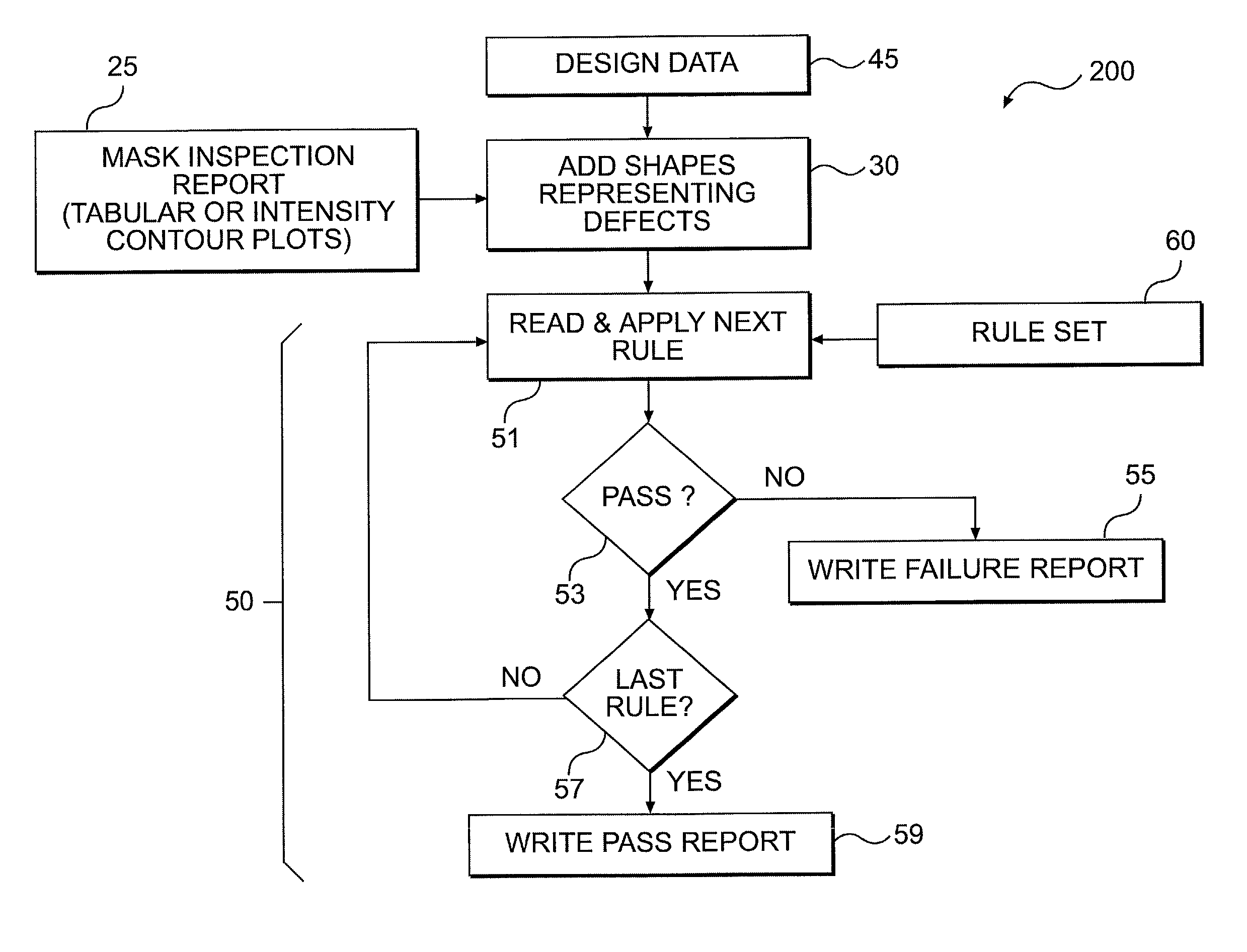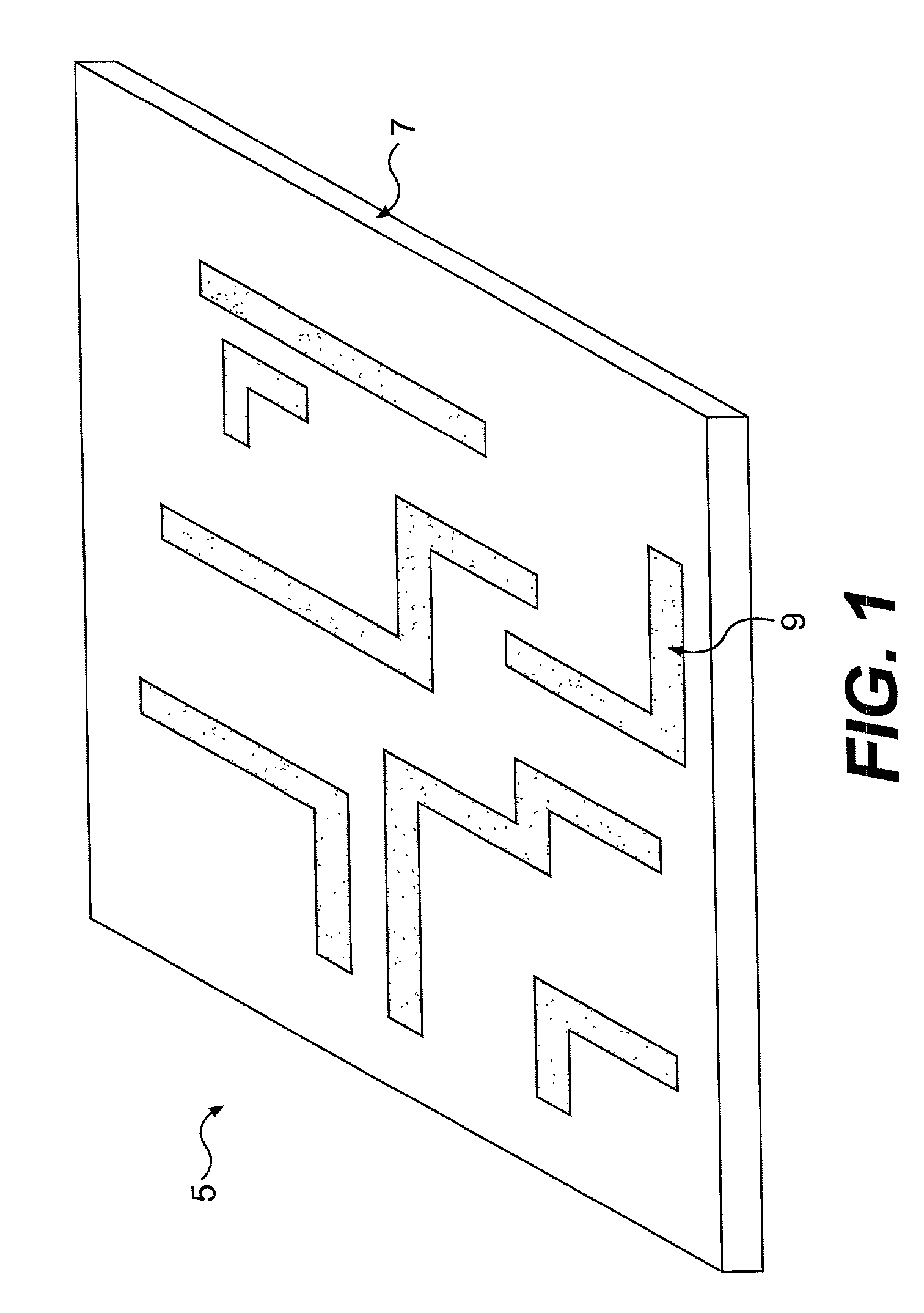Mask defect analysis system
a mask and defect technology, applied in the field of mask defect analysis system, can solve the problems of mask rejection, chip failure, non-discrimination of approach, etc., and achieve the effects of saving cost and time of repair, preventing defects, and speeding up the measurement process
- Summary
- Abstract
- Description
- Claims
- Application Information
AI Technical Summary
Benefits of technology
Problems solved by technology
Method used
Image
Examples
Embodiment Construction
[0021]The present invention is directed to a system for analyzing defects in masks used in a semiconductor manufacturing process, and, more particularly, to a method for automating the evaluation and analysis of defects in the masks so as to determine if a given mask should be scrapped, repaired or accepted. The method utilizes defects identified through an industry-accepted inspection process and a design data repository that stores design layout data for each mask being inspected, combined with a predetermined rule set, to identify defects in the masks that would be likely to cause chip failures. By using the method of the present invention, an automated process is provided to determine whether mask defects identified during the inspection process will likely lead to failure of the product.
[0022]This method is not directed to determining whether a failure on the mask has occurred. Rather, the present invention relies on the pre-existing mask inspection process, as well as the pre-...
PUM
| Property | Measurement | Unit |
|---|---|---|
| size | aaaaa | aaaaa |
| size | aaaaa | aaaaa |
| size | aaaaa | aaaaa |
Abstract
Description
Claims
Application Information
 Login to View More
Login to View More - R&D
- Intellectual Property
- Life Sciences
- Materials
- Tech Scout
- Unparalleled Data Quality
- Higher Quality Content
- 60% Fewer Hallucinations
Browse by: Latest US Patents, China's latest patents, Technical Efficacy Thesaurus, Application Domain, Technology Topic, Popular Technical Reports.
© 2025 PatSnap. All rights reserved.Legal|Privacy policy|Modern Slavery Act Transparency Statement|Sitemap|About US| Contact US: help@patsnap.com



